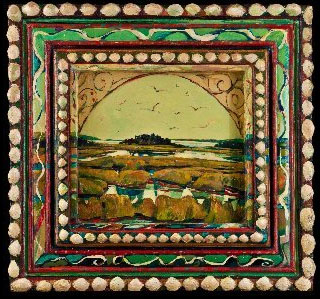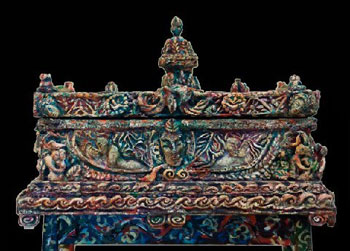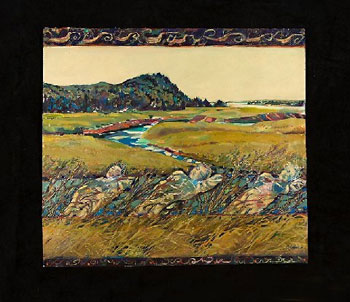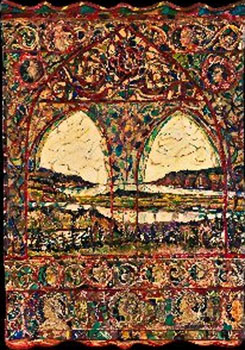Sometimes magnificent compositions begin with mundane activities. A sleeping sister is photographed. These images then become the inspiration for three figures in the foreground of Sleeping Muses, one of Andrea Blanar’s striking landscapes.
The Hungarian-born artist, who now lives in New Brunswick, has been making art for more than 40 years. She exhibits both nationally and internationally and is showing 16 recent works at Gallery on the Bay.

A landscape painter who feels the sacredness of the land, Blanar works with a variety of materials and paints in a loosely representational style.
In Sleeping Muses, dabs of jewel-like tones enrich the winding river and the hills in the distance. Patches of white paint seem to sparkle among the darker tones. The sleeping Muses in the foreground are almost identical, lying in the marsh with one arm raised and bent behind the head. Blanar paints their bodies with streaks of blue, red and yellow.
The curves of their bodies are echoed in the hills and river, suggesting a oneness between the human body and nature. Such closeness is not surprising, since Blanar herself gets up close e
. 
“I lay the Muses into marshes as I frequently have to lie into the marsh for the close-up view,” she says. “I need to do this to get a sense of the frontal first entry into the composition. Then I stand to get the midpoint of the composition and then I climb to get the aerial.”
Blanar says she wants the viewer to fly into the painting through the horizontal of grassesnting
.
That entry leads directly to the three Muses. Muses are traditional sources of artistic inspiration. Their sleeping attitudes recall ancient earth goddesses about to awaken in the spring. And three is a traditional number for such goddesses.
Blanar says her Muses pay homage to the important women in her life. They are also an integral part of her being.
“When I was ill, I placed myself constantly mentally lying into these marshes, I transported myself into the marshlands and lay into these marshes and suddenly felt an immense strength from this state.”

Marshlands also appear in Shells — Baie Verte. Horizontals of land and water alternate as we move to the distance under a blue-yellow sky filled with the simplified forms of flying birds. The painting takes its name from the rows of shells on the frame.
Blanar, who took carpentry courses, usually builds her own frames, getting some of her materials from demolition sites.
The outermost part of the painting consists of an elaborate frame made up of shells — products of nature — neatly lined up on all four sides. Smaller shells appear on an inner band of frame. But between these two shell frames we spy the edges of a landscape that continues into the painting proper. And this landscape is topped by a painted arch.
As in many of Blanar’s pieces, frame and subject are, like art and nature, inextricably linked.
Regina Haggo, art historian, public speaker, curator and former professor at the University of Canterbury in New Zealand, teaches at the Dundas Valley School of Art.
dhaggo@thespec.com
Andrea Blanar
Where: Gallery on the Bay, 231 Bay St. N.
When: until April 15
Phone: 905-540-8532 905-540-8532
Web: galleryonthebay.com